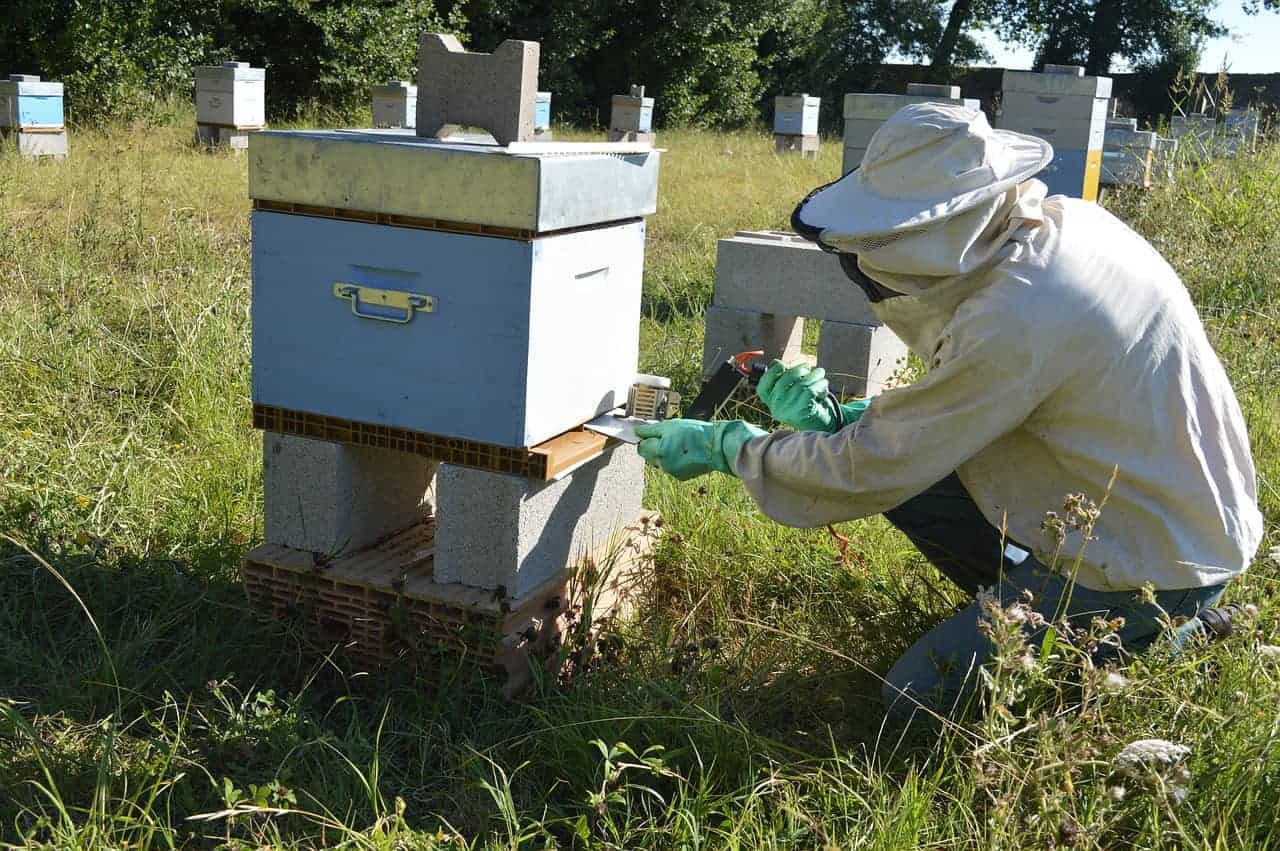Spring is the busiest time of the year for the beekeeper. Bee populations develop rapidly and changes happen very quickly in the beehive. It is a challenge for the beekeeper to stay ahead — to anticipate, not merely re-act. We often have to make decisions based on relatively little information. It is probably the toughest management season during the year. Timing is everything.
This is the opening for my March 2022 Beekeeping Basics column for the American Bee Journal (pages 261-265). In April and May issues I discuss Swarming in 2 parts – basics of swarming and then aspects of control which I begin by asking if we can really control swarming? (April pages 385-389, May Pages 499-504). If you don’t get this journal and would like to have the articles, send me an email (dmcaron@udel.edu) and I will attach as a return. These 3 issues also have a continuing series of articles by Randy Oliver (Scientific Beekeeping.com) on extended release Oxalic acid (OAE).
April 25 WVBA meeting

I discussed Oxalic acid, as one of possible mite control chemical treatments at the April 25th WVBA meeting. It is a big topic. There is no single “magic bullet” and we need integrate several methods for mite control. Oxalic acid vaporization (0AV) is one of these valuable tools but only when there is little to no capped brood present. Otherwise, we need fumigate 6-7 times over a month time period to have any chance of reducing mites. Oxalic acid extended-release (OAE)might be the most successful method when brood is present. However ,OAE is not legal and EPA does not intend to modify the USDA license on oxalic acid (See Randy Oliver’s comments on this – he is able to “test” oxalic acid because he has a pesticide license – if you use it you too would need to have such a license). A commercial product from Argentina might become available and tests are underway to confirm its efficacy.
Mite control begins by: Keep mite numbers low – harder to lower high mites. Here summarized is my comments on mite control strategy:
- General: spread colonies, paint distinctly, sunny site
- winter season: OAV – 2X if brood (why doesn’t OAD work as well?)
- Spring season: Apivar (if no early flow), drone brood removal, brood interruption (split colonies, treat splits OAV without capped brood) OR Apiguard/ApiLife Var once warms enough (65 degrees plus)
- When Supers on: Formic acid (MAGS or FormicPro OR What about OAE?? (OA w/ glycerin heated into ?)
- Fall season: Formic (if # high), Requeening (w/hygienic) then Apivar
PNW Honey Bee Survey
REMINDER: the www.pnwhoneybeesurvey.com/survey/ is still open until end of April for you to enter your overwintering results and managements you did this past season.
New Video with OR Beekeeper Dirk Olsen
The Honey Bee Health Coalition (HBHC) has produced a series of informative short videos https://youtu.be/H0iTlaiO3iw in a Bee Integrated program designed to improve honey bee health. The videos feature farmers from AgriCare (a large CA based farming conglomerate that manage over 3000 acres of blueberries and Hazelnuts in Marion and Polk counties. Farms are located north of Independence in Polk Co along the Willamette River and near Independence just over the Marion County line along the SantiAm River. Growers T.J. Hafner and George Kaufman, beekeeper Dirk Olsen of North Albany and Oregon State University Extension’s Andony Melathopoulos describe how bringing farmers, applicators and beekeepers together can directly help protect honey bee health through reduced exposure to honey bees, other pollinators and beneficial insects to pesticides.
In a short 3 ¾ minute segment https://www.youtube.com/watch?v=6j4PINa_oa8 George Kaufman of AgriCare discusses his farm’s hedgerows and how they encourage honey bee health and their role in attracting native pollinators and other beneficial insects. George shares tips on selecting plants for helpful habitat. He says while there are lots of plant lists, you have to find what works best in your own microhabitat. A farming operation has to balance plants that might be useful to beneficial while not a harbor for pest insects like Spotted wing Drosophila (a serious blueberry pest). He says they have been able to demonstrate better blueberry yields with companion plantings.
In another short (2 ½ minute) video https://youtu.be/f1ODHXmh4gQ 3.13 AgriCare’s TJ Hafner (blueberry grower) and beekeeper Dirk Olsen (Olsen Honey Farms – he has bees throughout central Willamette valley) discuss how they coordinate their spraying program to safeguard honey bee health at the Hall’s Ferry Farm near Independence in Polk County across the river from Salem. Spraying at the end of the day is one method. One component Dirk would like to see better coordinated is the handling of the ground vegetation. He points out that pollinators, his bees and native pollinators, need more than just the berry bloom to sustain their populations and keep healthy populations around for pollination. In another segment Hafner and Olsen explain how important it is for farmers and beekeepers to understand each other’s businesses—and how that helps protect bee colony health. https://youtu.be/a5hJUQX20rk
